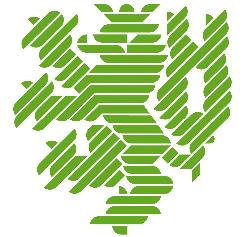Mathematische Modellierung von Systemen in der Kreislaufwirtschaft
Bachelorarbeit Mathematik
Betreuung
Kooperation
Beschreibung
Ausgehend von einem wohldefinierten Materialfluss- und Wertesystem
führen wir eine Metrik in der Kreislaufwirtschaft ein,
die sich aus der Maximierung des gesellschaftlichen Werts von Materialien ableitet,
die bei der Produktion von Gütern aus dem Dienstleistungsbereich verwendet werden.
Diese Metrik kann das Recycling, aber auch alternative Strategien wie die Verlängerung der Lebensdauer
und neue Geschäftsmodelle, die die Produktivität von Rohstoffen erhöhen, beschreiben.
Es wird ein selbstheilendes System erschaffen, das sich - ähnlich wie Lebewesen - mithilfe seiner gespeicherten Ressourcen selbst reparieren kann.
Dazu entwickeln wir ein mathematisches Modell, um diesen Prozess darzustellen.
Es handelt sich dabei um eine Maschine, die Ressourcen verbraucht, sich dann selbst repariert und die übrig gebliebenen Ressourcen für eine spätere Verwendung
beiseite legt.
Parallel werden mathematische Werkzeuge entwickelt, um zu ermitteln, wie wahrscheinlich es ist,
dass sich diese Maschine in verschiedenen Zuständen befindet (z.B. dass sie perfekt funktioniert,
ein wenig repariert werden muss oder kaputt ist).
Um herauszufinden, wie wahrscheinlich es ist, dass sich der Rechner in seinem besten Betriebszustand befindet,
wird untersucht, wie viele "Reparaturkanäle" er hat, wie gut diese Kanäle Dinge reparieren können
und wie viel zusätzliches Material er gespeichert hat.
Kurz gesagt: Je mehr "Backup"-Ressourcen die Maschine hat,
desto weniger muss das Reparatursystem beansprucht werden,
damit die Maschine gut läuft.
Fragestellung
Schlüsselwörter
Recycling, Kreislaufwirtschaft, lineare Wirtschaft, Kreislaufwirtschaftswachstum, Metrik der Kreislaufwirtschaft
Literatur:
- C. Anderson,
The production process: Inputs and wastes,
Journal of Environmental Economics and Managment 14(1) (1987), 1-12.
- C. Busu, M. Busu,
Modeling the Circular Economy Processes at the EU Level Using an Evaluation
Algorithm Based on Shannon Entropy,
Processes 6(11) (2018), 225. https://doi.org/10.3390/pr6110225
- A.M.A. El Saadany, M.Y. Jaber,
A production/remanufacture model with returns’ subassemblies managed differently,
International Journal of Production Economics 133(1) (2011), 119-126.
- EMF,
Circularity indicators: An approach to measuring circularity,
Methodology, 2015.
- J.F. García-Barragán, J. Eyckmans, S. Rousseau,
Defining and Measuring the Circular Economy: A Mathematical Approach,
Ecological Economics 157 (2019), 369-372.
- M. Haupt, C. Vadenbo, S. Hellweg,
Do we have the right performance indicators for the circular economy?:
Insight into the swiss waste management system,
Journal of Industrial Ecology 21(3) (2016), 615-627.
- V. Jayaraman,
Production planning for closed-loop supply chains with product
recovery and reuse: an analytical approach,
International Journal of Production Research 44(5) (2006), 981-998.
- J. Jayakumar, K. Jayakrishna, K.E.K. Vimal, S. Hasibuan,
Modelling of sharing networks in the circular economy,
Journal of Modelling in Management 15(2) (2020), 407-440.
https://doi.org/10.1108/JM2-05-2019-0101.
- S.L. Podvalny, D.V. Logunov, E.M. Vasiljev,
Modeling of systems with a closed loop of material resources circulation,
Journal of Physics: Conference Series, 2131(3) (2021), p. 032115. IOP Publishing.
- J. Kirchherr, D. Reike, M. Hekkert,
Conceptualizing the circular economy: An analysis of 114 definitions,
Resources, Conservation and Recycling 127 (2017), 221-232.
- F. Krysiak, D. Krysiak,
Production, consumption, and general equilibrium with physical constraints,
Journal of Environmental Economics and Management 46(3) (2003), 513-538.
- M. Linder, S. Sarasini, P. van Loon,
A metric for quantifying product-level circularity,
Journal of Industrial Ecology 21(3) (2017), 545-558.
- V. Moreau, M. Sahakian, P. Griethuysen, V. Francois,
Coming full circle: Why social and institutional dimensions matter for the circular economy,
Journal of Industrial Ecology 21(3) (2017), 497-506.
- S.N. Nielsen, et al.,
A new ecology: Systems perspective. Elsevier, 2019.
- Z. Pan, J. Tang, O. Liu,
Capacitated dynamic lot sizing problems in closed-loop supply chain
European Journal of Operational Research 198(3) (2009), 810-821.
- R. Pethig,
Non-linear production, abatement, pollution and materials balance reconsidered,
Journal of Environmental Economics and Management 51(2) (2006), 185-204.
- P. Pineyro, O. Viera,
The economic lot-sizing problem with remanufacturing: analysis and an improved algorithm,
Journal of Remanufacturing 5 (2015), 1-13.
- M. Ramezani, A.M. Kimiagari, B. Karimi,
Closed-loop supply chain network design: A financial approach,
Applied Mathematical Modelling 38(15-16) (2014), 4099-4119.
- I. Sidelnikov, A. Brom, P. Kotova,
Simulation of optimal control of return flow of products from composite materials,
Journal of Physics: Conference Series, vol. 1990, no. 1, p. 012024. IOP Publishing, 2021.
- A. Tisserant, S. Pauliuk, M. Stefano, et al.,
Solid waste and the circular economy:
A global analysis of waste treatment and waste footprints,
Journal of Industrial Ecology 21(3) (2017), 628-640.



